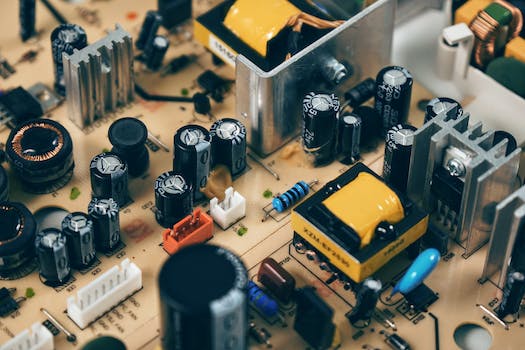-
Table of Contents
- The Fascinating World of Parallel Plate Capacitors
- What is a Parallel Plate Capacitor?
- Key Components of a Parallel Plate Capacitor
- Working Principle of a Parallel Plate Capacitor
- Capacitance Formula for Parallel Plate Capacitors
- Applications of Parallel Plate Capacitors
- Real-World Example: Parallel Plate Capacitors in Power Factor Correction
- Conclusion
- Q&A
- 1. What is a parallel plate capacitor?
- 2. How does a parallel plate capacitor store electric charge?
- 3. What factors determine the capacitance of a parallel plate capacitor?
- 4. What are some common applications of parallel plate capacitors?
- 5. How do parallel plate capacitors improve power factor in electrical systems?

When it comes to understanding the principles of electricity and electronics, one component that plays a crucial role is the parallel plate capacitor. This simple yet powerful device is used in a wide range of applications, from filtering out noise in electronic circuits to storing energy in power systems. In this article, we will delve into the inner workings of parallel plate capacitors, explore their key characteristics, and discuss their practical uses in various industries.
What is a Parallel Plate Capacitor?
A parallel plate capacitor is a type of capacitor that consists of two parallel conductive plates separated by a dielectric material. When a voltage is applied across the plates, an electric field is created between them, causing the plates to store electric charge. The capacitance of a parallel plate capacitor is determined by the area of the plates, the distance between them, and the permittivity of the dielectric material.
Key Components of a Parallel Plate Capacitor
- Conductive Plates: The two plates of a parallel plate capacitor are typically made of metal, such as aluminum or copper, to allow for the flow of electric charge.
- Dielectric Material: The dielectric material between the plates serves to increase the capacitance of the capacitor by reducing the electric field strength.
- Terminal Connections: The plates are connected to external circuitry through terminal connections, allowing for the transfer of electric charge.
Working Principle of a Parallel Plate Capacitor
When a voltage is applied across the plates of a parallel plate capacitor, positive charge accumulates on one plate while an equal amount of negative charge accumulates on the other plate. This creates an electric field between the plates, which stores energy in the form of electric potential. The capacitance of the capacitor determines the amount of charge that can be stored for a given voltage.
Capacitance Formula for Parallel Plate Capacitors
The capacitance of a parallel plate capacitor can be calculated using the formula:
C = ε₀A/d
- C is the capacitance in farads (F)
- ε₀ is the permittivity of free space (8.85 x 10^-12 F/m)
- A is the area of the plates in square meters (m²)
- d is the distance between the plates in meters (m)
Applications of Parallel Plate Capacitors
Parallel plate capacitors are used in a wide range of electronic devices and systems due to their ability to store electric charge and energy. Some common applications of parallel plate capacitors include:
- Filtering out noise in electronic circuits
- Storing energy in power systems
- Tuning radio frequency circuits
- Power factor correction in electrical systems
Real-World Example: Parallel Plate Capacitors in Power Factor Correction
In power systems, parallel plate capacitors are used to improve the power factor of electrical loads by compensating for reactive power. By connecting capacitors in parallel with inductive loads, the overall power factor of the system can be increased, leading to improved efficiency and reduced energy costs.
Conclusion
Parallel plate capacitors are essential components in the world of electronics and electrical engineering, playing a key role in storing energy, filtering out noise, and improving power factor in electrical systems. By understanding the principles of parallel plate capacitors and their applications, engineers and designers can harness the power of these devices to create more efficient and reliable electronic systems.
Q&A
1. What is a parallel plate capacitor?
A parallel plate capacitor is a type of capacitor that consists of two parallel conductive plates separated by a dielectric material.
2. How does a parallel plate capacitor store electric charge?
When a voltage is applied across the plates, positive charge accumulates on one plate while an equal amount of negative charge accumulates on the other plate, creating an electric field between them.
3. What factors determine the capacitance of a parallel plate capacitor?
The capacitance of a parallel plate capacitor is determined by the area of the plates, the distance between them, and the permittivity of the dielectric material.
4. What are some common applications of parallel plate capacitors?
Parallel plate capacitors are used for filtering out noise in electronic circuits, storing energy in power systems, tuning radio frequency circuits, and power factor correction in electrical systems.
5. How do parallel plate capacitors improve power factor in electrical systems?
By connecting capacitors in parallel with inductive loads, parallel plate capacitors can compensate for reactive power and increase the overall power factor of the system.






